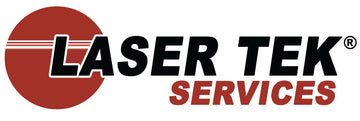The media (paper) transport system in a conventional laser printer comprises of 5 major processes, as follows:
Pick-up
Image Registration
Laser Imaging
Fuser or baking
Printed Document
As it moves along printer components,paper is handled by 2 or 3 sets of rollers per component that ascertain the precise movement of media. Any mishandling caused by a defective roller increases the possibility of paper to curl or wave which eventually causes chronic paper jams. It is apparent that laser printer manufacturers recognize the likelihood of paper jams in the course of laser printing. That is why optical sensors are laid out along the critical turns where paper jams can actually happen to inform users about the location of the paper jam for easy retrieval.
But why do paper jams really happen? The real culprit behind any paper jam is a non-uniformed lateral tension applied on the media. It is a design prerogative for rollers handling the paper (media) to run on the same linear velocity. This is probable only if driven by a central gear train that will synchronize the speed of all rollers. However, this is not possible because use of the printer delivers part tolerances on the rollers. It is likely that material differences and varying characteristics of wear and tear of the roller and gear train render the linear velocities to vary to a certain extent at any given time.
For example, if the output roller operates at a slower linear velocity than that of the fuser roller, then the fuser roller will deliver more paper than what the output roller can handle. What happens thereafter is that media will succumb to distinct deformation such as waves, crimp, curls and wrinkles. If the speed disparity is great, then paper jams occur. This disparity in linear velocity between the output and fuser roller alone will cause media to buckle-up or fold at the printers paper exit area. And since media coming out of the fuser assembly is still hot due to the high temperatures and in plastic form at that, any deformations will come out as permanent.
This phenomenon termed media deformation becomes more visible as the size of the media increases from size A (11 inches long) to size B (17inches long) which could also be the precursor of a paper jam. This problem however, involves only the rollers that could not be resolved with the replacement of the toner cartridges or refill of its toner supply using a toner refill kit.
Why do paper jams occur? Remember that paper jams are only caused by a not fully synchronized component roller that needs maintenance cleaning at the very least, and replacement at the most.





